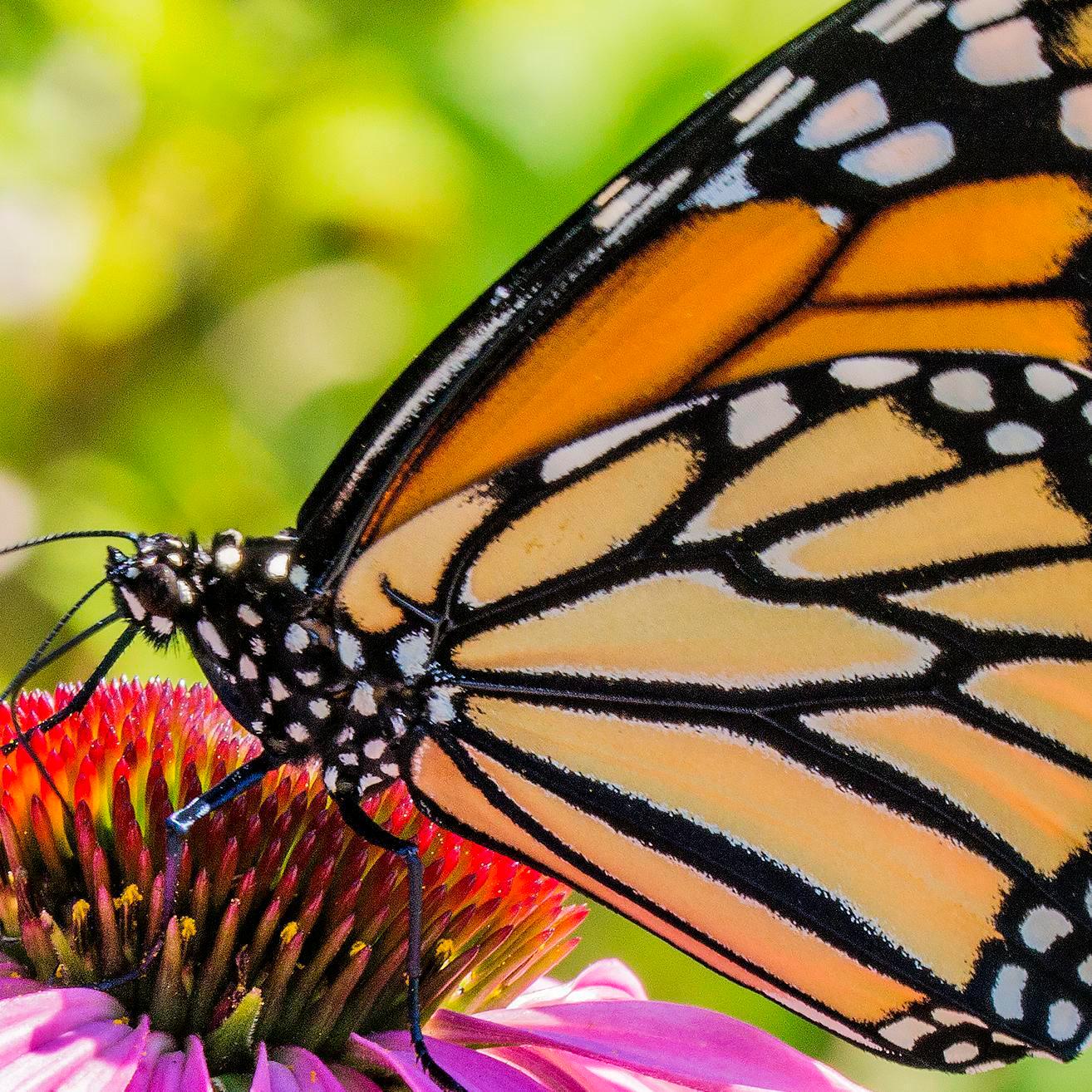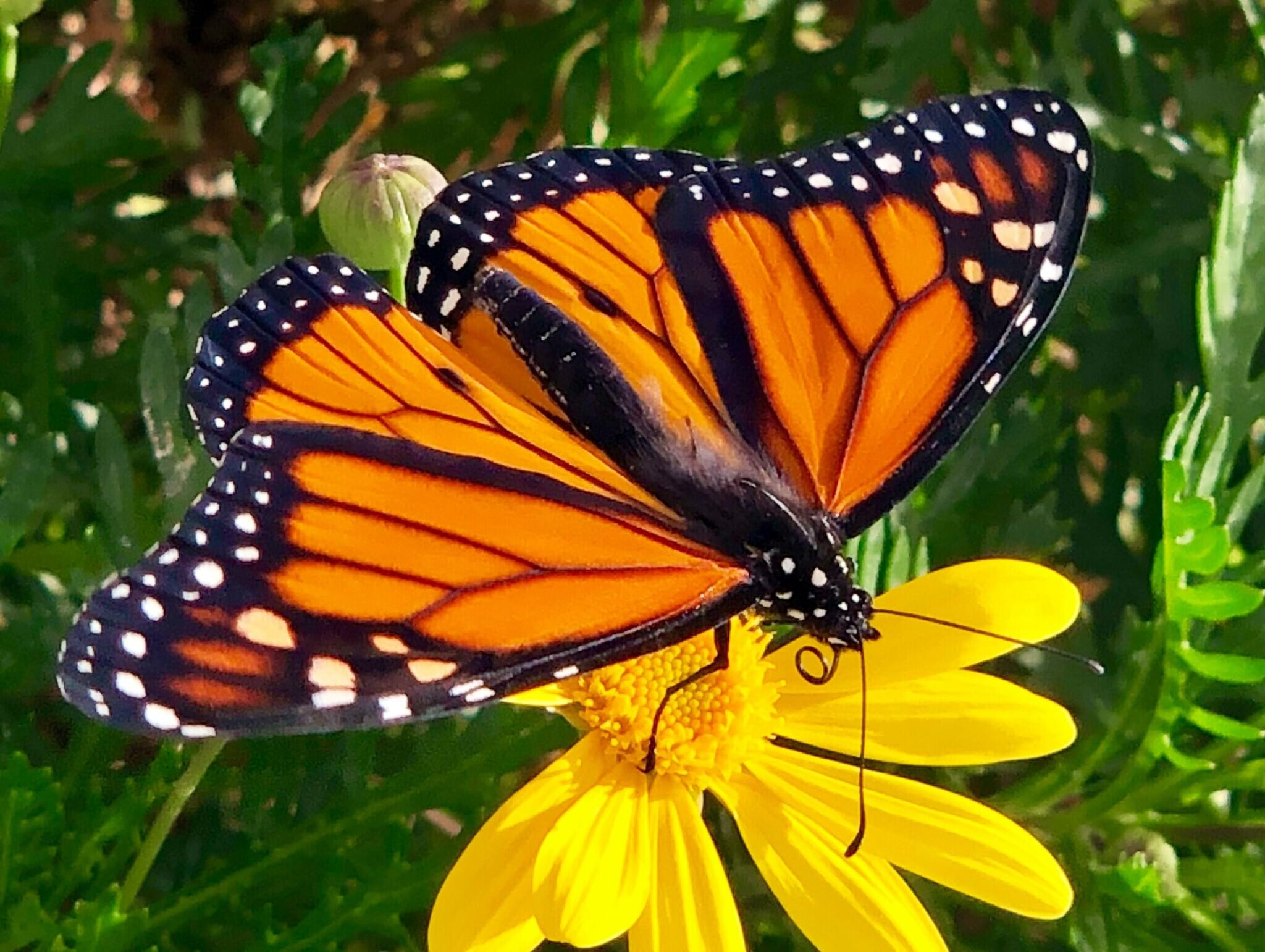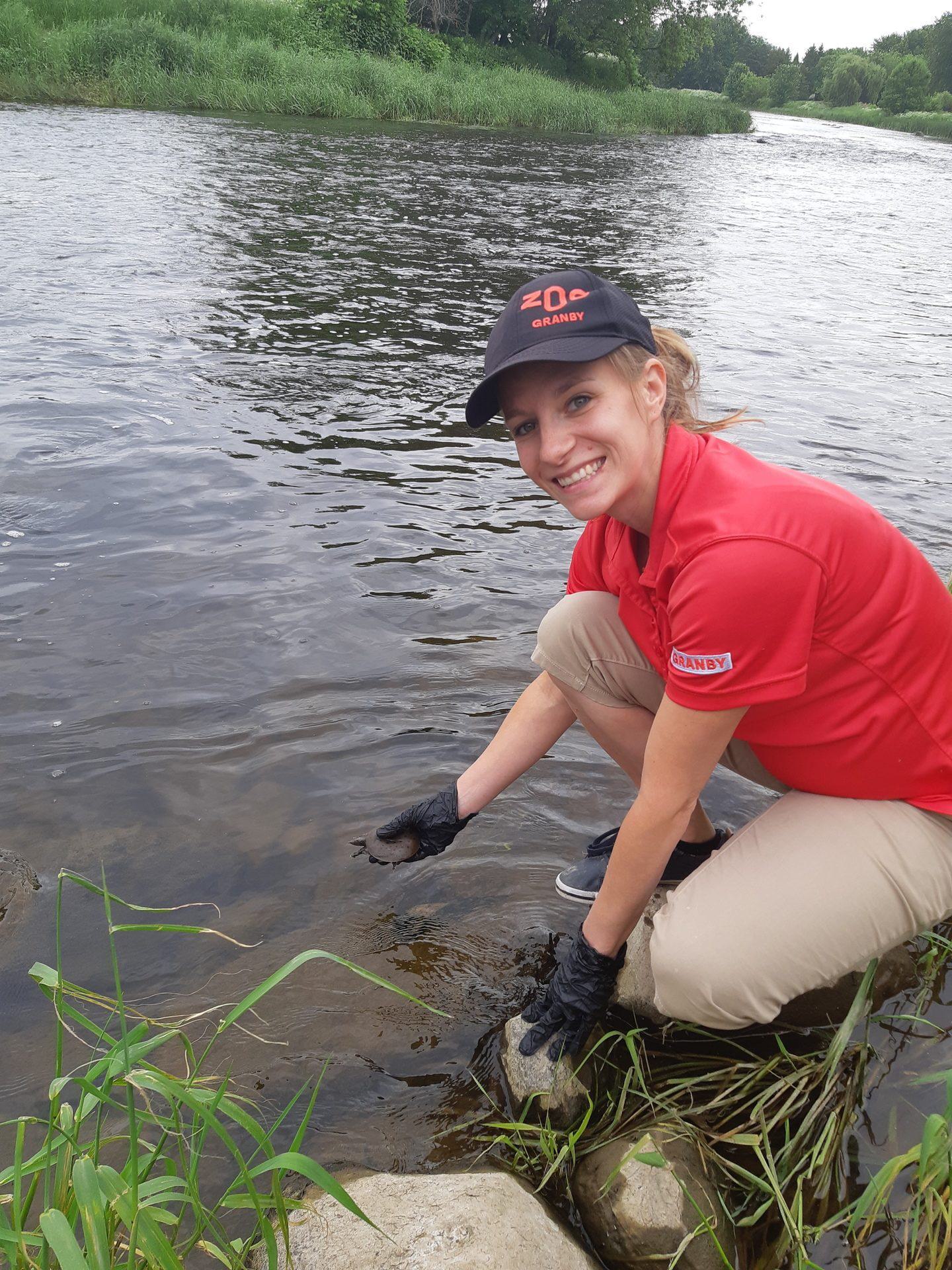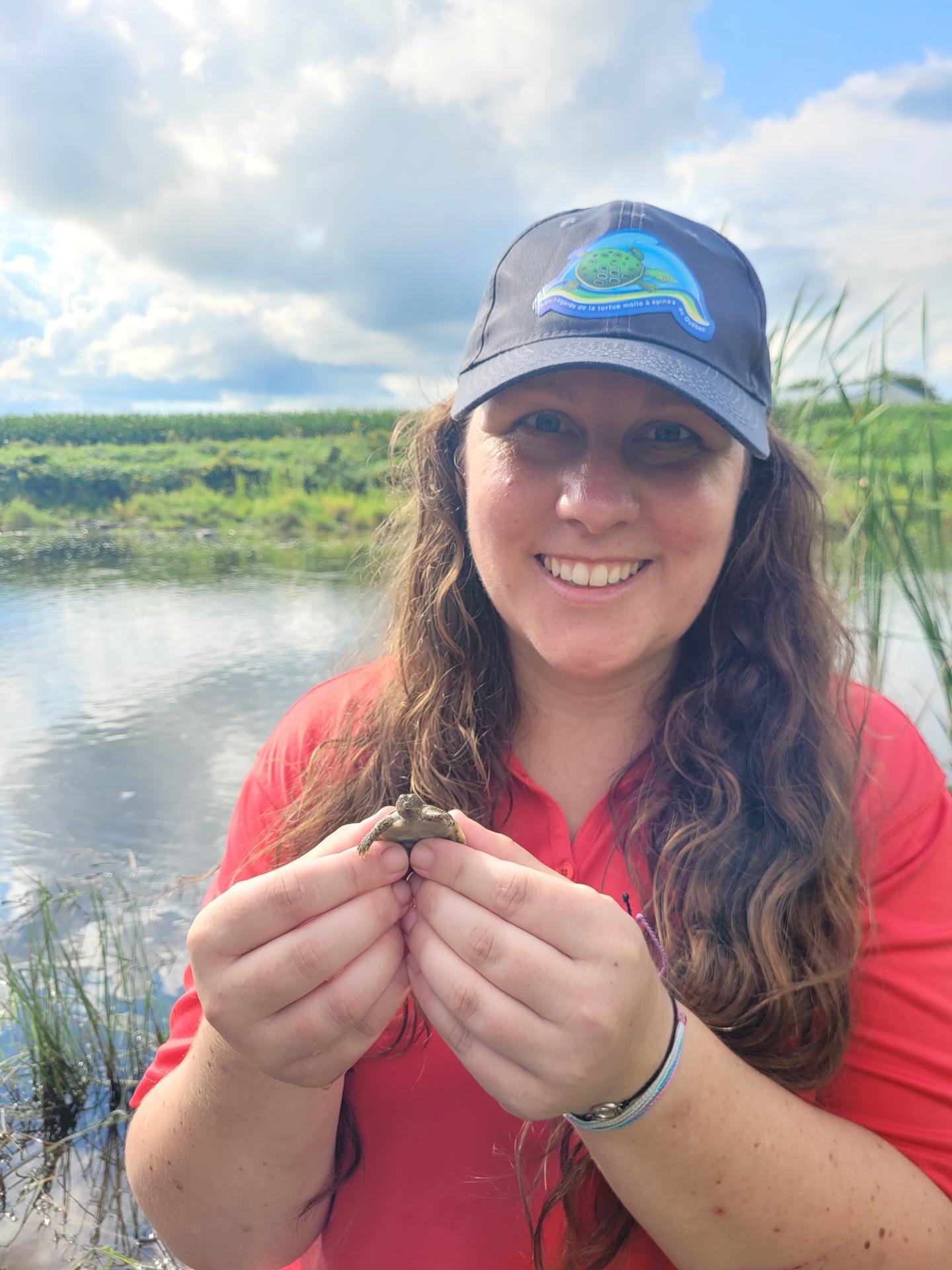Saving the Monarch butterfly

Pooling our ressources for a greater conservation impact.
Highly emblematic and charismatic, the Monarch butterfly has been listed as an endangered species on the IUCN Red List since 2021. In Canada, it has been classified as a species of special concern under the Species at Risk Act since 2016. This migratory butterfly, which undertakes a long journey between North America and Mexico each year, faces numerous threats that exacerbate its decline. Deforestation of its wintering site, climate change, and the unavailability of native species such as milkweed in its migratory corridor are significant threats to the species.
Monitoring and conservation actions must be implemented to help Monarch populations along their migratory routes and in their breeding and feeding areas. Understanding the movements of the species is crucial, highlighting the importance of inventories and tagging of migrating individuals. Planting pollinator gardens with milkweed can also provide a boost to the Monarch during its migration and reproduction.

Impact
Since 2022, the Zoo de Granby has been responsible for monitoring Monarch butterflies in nature parks and pollinator gardens in the city of Granby. In 2023, the first migratory Monarch butterflies were tagged to contribute to the collection of scientific information surrounding the species' migration.
The Zoo de Granby is also a partner in programs dedicated to the Monarch butterfly as part of the SAFE (Saving Animals From Extinction) program by the Association of Zoos and Aquariums (AZA). This program leverages the collective expertise of accredited zoological institutions to protect endangered species.
Some numbers:
- First migratory Monarch butterflies tagged in 2023: 4
- Inspection of 240 milkweed plants per week, totaling over 3,000 plants each summer
- Protection of over 40 individuals (eggs, larvae, chrysalises) from mowing

Vision for the future
In the future, the Zoo de Granby plans to continue its conservation efforts for this species and expand its area of action. Partnerships with municipalities enable collaborative work to enhance wastelands/grasslands in municipal parks, prioritizing certain meadows where the Monarch has high activity potential during its reproductive cycle. Citizen volunteer participation will also be encouraged to maximize the monitoring and conservation actions for the Monarch.
Interesting informations





